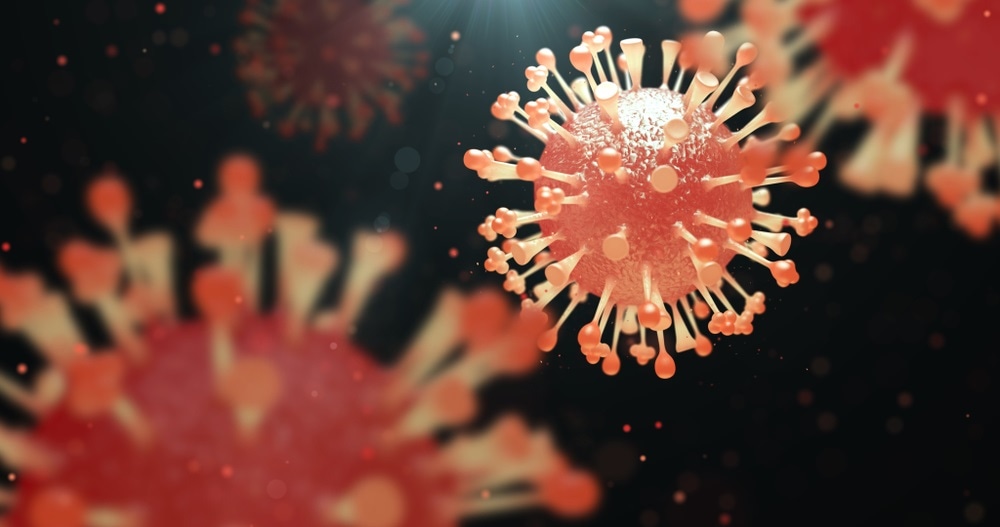
New flu drug makes influenza viruses develop resistance
Researchers have discovered a mutation in strains of influenza treated with a new and commonly used drug that makes the virus resistant to treatment.
 Image Credit: pinkeyes / Shutterstock.com
Image Credit: pinkeyes / Shutterstock.comIt is unlikely that the mutation will lead to widespread resistance globally, but it could pose a problem among family members and in hospital or nursing home settings.
In January, an 11-year-old boy in Japan who had a fever attended a medical clinic where he was diagnosed with influenza H3N2 and prescribed the new drug.
The boy felt better at first, but a few days later, the fever returned even though he was still taking the medication. Two days later, his 3-year-old sister also developed a fever, and she too was diagnosed with the H3N2 strain.
On analyzing samples taken from the two children, the University of Wisconsin-Madison professor Yoshihiro Kawaoka found that the H3N2 strain harbored a new kind of drug-resistant mutation that is capable of passing between individuals and just as capable of causing illness as the non-mutated strain.
Comparing the viral genomes of samples taken from the two children
As recently reported in the journal Nature Microbiology, out of 13,133 nucleotides, there was only one nucleotide difference between the two samples. In other words, the difference between the virus taken from the brother before he was prescribed the drug and the virus taken later from the girl was just one single letter change among more than 13,000 nucleotides.
This means the virus acquired resistance during treatment and transmitted from brother to sister, explains Kawaoka.
The new drug is due to be licensed in many other countries soon
The new drug targets the machinery used by flu viruses to replicate their genes inside their host.
It was initially licensed during 2018 and 2019 in Japan, the United States, and Hong Kong. The drug accounted for 40% of the market share of influenza drugs used in Japan throughout the 2018 to 2019 flu season, and it is due to be licensed in many other countries soon.
However, Kawoaka and colleagues say that clinical trial data has previously shown that some patients with H3N2 or H1N1 flu who took the drug developed a mutation in part of the virus's machinery that the drug targets.
Another group of researchers also previously found that this mutation, which is at position 38 of the polymerase acidic protein, had not been reported in 17,000 samples of H3N2 that were taken before December 2018.
Kawaoka says the new drug passed phase three testing and was classed as safe, but that even during clinical trials, the emergence of drug resistance was identified. A previous study also identified the mutation in samples taken from almost one-quarter of 77 children who had been treated with the drug.
Investigating the viral properties before and after treatment
Kawaoka and the team decided to investigate the properties of H3N2 and H1N1 before and after treatment with the drug.
They collected samples from patients before and after they had taken the drug during the 2018 to 2019 flu season. They tested 74 H1N1 samples taken from 10 adults and 64 children before treatment and 22 samples taken both before and after treatment from 7 adults and 15 children.
No mutations were identified in samples taken before patients were treated, but mutations were identified in about 23% of samples taken after treatment.
Kawaoka and the team also tested 141 H3N2 samples taken from 40 adults and 101 children before treatment and found that two of the children's samples had the mutation. Analysis of samples taken from four adults and 12 children before and after treatment showed that four of the children's samples harbored the mutation.
Next, the team cultured the mutated virus and found that it grew just as well as the non-mutated version.
Testing the mutated viruses in animals
They then tested the mutated version of H1N1 and H3N2 in hamsters, which showed that the mutation continues to be copied as the viruses replicate.
Further testing of the mutant viruses in ferrets showed that they passed from infected animals to healthy ones and that the severity of illness was similar to that seen with the non-mutated versions.
Kawaoka says that although it is unlikely the mutation will lead to widespread resistance around the world, it could become a problem among family members in close proximity and in facilities such as hospitals and nursing homes.
"It's a good drug for adults"
He also points out that although children seem especially susceptible to the mutation following treatment, the mutation arises much less frequently in adults.
"It's a good drug for adults," says Kawaoka.
He also points out that patients with H1N1 or H3N2 that has developed resistance to the new drug can still be treated with other antiviral medications.
"The drug-resistant virus does transmit, but there are so many influenza viruses worldwide, and only a small population will be treated with this drug," says Kawaoka... "The vast majority remain drug-sensitive."
Source:
New flu drug drives drug resistance in influenza viruses. Eurekalert. Available from: https://www.eurekalert.org/emb_releases/2019-11/uow-nfd111919.php























.png)








No hay comentarios:
Publicar un comentario